|
|
Post by dvg on Oct 9, 2013 16:38:44 GMT -5
The tags on these 4 " short pots say that these seeds originally labelled as Boswellia serrata plants were sown back on February 21, 2007. 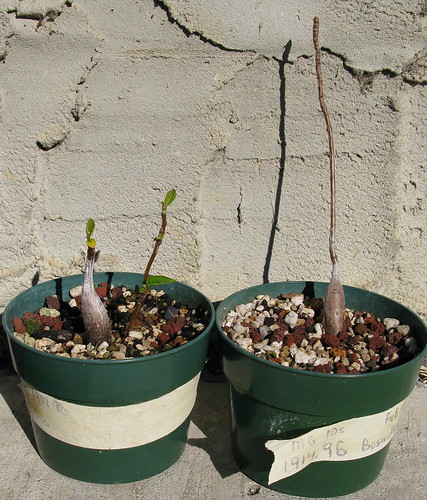 This plant has a couple of braches poking up from beneath the soil's surface and another starting out atop of this plant's caudal-like base. 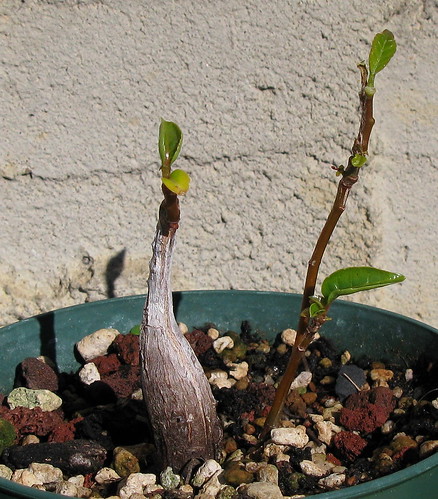 The other plant also has a swollen base with a couple of small roots heading down underground,  but is showing very little if any active green growth up above at the moment. 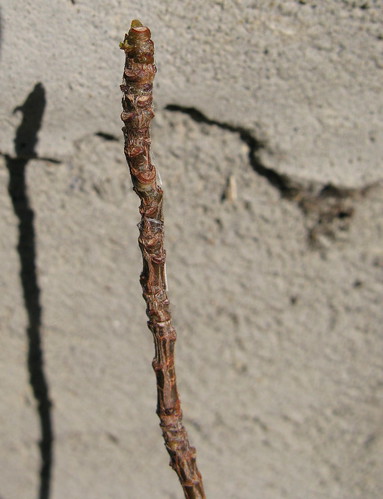 However, once the plants were unpotted, I was surprised to see the root systems these plants were quietly growing in their small pots. 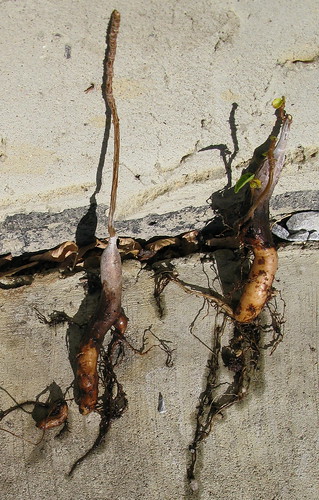 These plants can be propagated from tubers that they produce underground - there is a small tuber in the bottom left corner of the photo below. 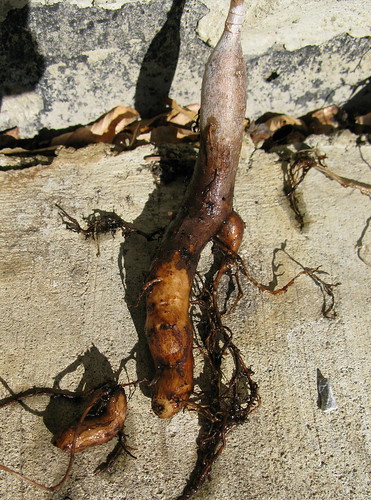 This tuberous root system grew to the bottom of its pot and then began to branch out. 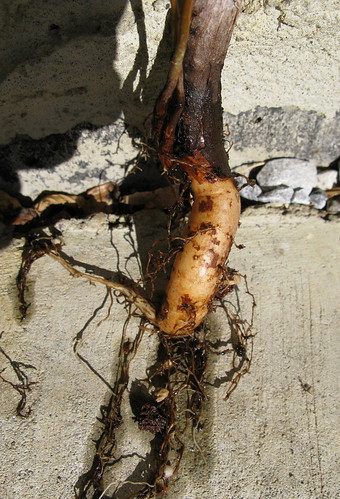 Now when I repot them, I can take advantage of the thickened roots by raising a good portion of the root above the soil level and allowing it to convert into a fully functioning trunk. If any one is interested in growing any of the 19 Boswellia species, I would highly recommend getting a copy of Jason Eslamieh's Cultivation of Boswellia to help with the differing in culture needs of each species. dvg |
|
|
|
Post by H2O on Oct 9, 2013 19:37:15 GMT -5
Just awesome Doug! Thanks for sharing!
That plant is taking some major dedication. What is the eventual size when grown as a potted plant?
|
|
|
|
Post by dvg on Oct 10, 2013 15:09:29 GMT -5
Thanks Justin.
I have hit a few speed bumps with growing this species.
The first is that I did not have good growing advice when I first began growing these out from seed.
They were kept much too dry in a very small pot (3") and were not fertilized.
This summer they were placed outside in full sun and were fertilized from the beginning of August.
It turns out that Boswellia species enjoy water running freely through their roots in a well draining media mix.
And they respond very well to fertilizer.
Unfortunately this species is not recommended for cultivation in pots and is much happier with it roots in the ground, something that I wouldn't be able to afford them for more than 2 or 3 months in the summer.
They'll have to be happy with pot culture for now.
These will be potted up into larger, deeper pots and will also be fertilized on a regular schedule, which i'm hoping will eventually jumpstart some upper branching growth.
Justin, these plants can grow into fair sized trees in fertile soil, but in cultivation these will be kept somewhere between 20 to 30 inches in height eventually.
dvg
|
|
|
|
Post by canuk1w1 on Oct 11, 2013 6:59:56 GMT -5
Very impressive. Please continue with the updates and thanks for sharing!
|
|
|
|
Post by dvg on Oct 11, 2013 14:53:41 GMT -5
Very impressive. Please continue with the updates and thanks for sharing! Thanks Canuck1w1, I've been told that these plants don't appear to be B. serrata or even a Boswellia species. They do appear to be a pachycaul tree species or some sort. Maybe if I can grow it out a bit more, i'll be able to identify it properly. dvg |
|
|
|
Post by Apoplast on Oct 11, 2013 20:24:43 GMT -5
Hi DVG - I didn't know you liked fat plants! I used to grow all manner of chubby wonders when I lived in the desert. I'm impressed with your dedication to growing them in such an unsuitable climate. I donated mine to a school because I just couldn't keep them all going here in the north (south to most people on this forum). Good luck and let us know how they do.
|
|
|
|
Post by dvg on Oct 12, 2013 12:05:07 GMT -5
Hi Apoplast,
Yes I do appreciate the fat plants as you call them and especially some of the trees from the genera Boswellia. Bursera and Commiphora.
I've been collecting some of the trees better known for their resins.
And because I live north of these plant's preferable "sweet spot" for outdoor culture, the plan is to grow them out in large enough pots until it is time to reduce them down to bonsai culture.
dvg
|
|
|
|
Post by Apoplast on Oct 12, 2013 22:27:00 GMT -5
Hi DVG - Resins are interesting! I like plants that can defend themselves. Well. I like plants! The Burseraceae are a pretty intriguing group. I'v had the chance to see Bursera microphylla, B. fagaroides, and B. simaruba in habitat, the latter of which hardly constitutes a pachycaul species. As you noted, some of them do well in pot culture, but others are a challenge. I'm excited to hear about your success with this group. Should be fun. Good luck.
|
|
|
|
Post by dvg on Oct 15, 2013 15:08:49 GMT -5
Hi Apoplast,
Yes, i grow each one of the Bursera species that you mentioned - were they impressive in situ?
They responded very well to being outside for the summer, getting plenty of water and then some fertilizer from late July on.
dvg
|
|
|
|
Post by Apoplast on Oct 19, 2013 20:43:45 GMT -5
Hi Doug - I won't lie, they were pretty cool. I saw both B. microphylla and B. fagroides right at the edge of their aridity tolerance so they were stressed and unhappy. Which for caudiciforms makes for beautiful plants. The less happy they are, the more intriguing they look! I don't know that B. simaruba ever gets quite as fat, but they are pretty impressive trees. Red peeling bark. Straight thick bole. None of the ones I saw had the tortured and stalwart appearance of the other two species, but they were graceful and lofty with their own beauty.
Good luck growing them! They do love heat. I look forward to updates.
|
|